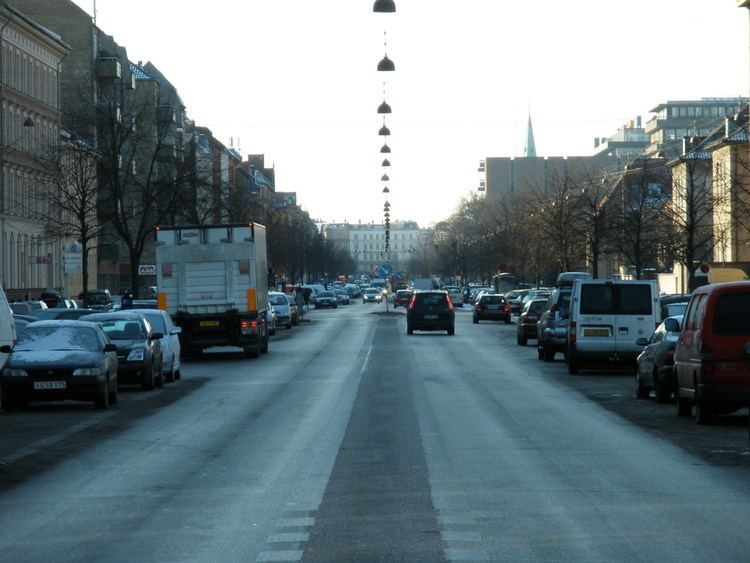 | ||
Blegdamsvej is a street in Copenhagen, Denmark, connecting Sankt Hans Torv in Nørrebro to Trianglen in Østerbro. The busy artery Fredensgade separates the Nørrebro and Østerbro sections of the street from each other.
Contents
Map of Blegdamsvej, K%C3%B8benhavn, Denmark
History
Blegdamsvej takes its name after the 24 ponds on the west side of Sortedam and Peblinge Lake, which was used for textile bleaching. They were established in about 1772 and had numbers from south to north, beginning at present day Sankt Hans Torv. On the other side of the ponds was Blegedam Common, the oldest of Copenhagen's commons, where the bleachers left the cloth to bleach in the sun. lined with trees on both sides, mainly horse chestnut, willow and lime trees.
From the middle of the 19th century, the narrow lots came into other use, first for construction of smaller industrial enterprises and later apartment buildings, although the last bleacher did not disappear until 1867.
Notable buildings and residents
The north side of the street is dominated by the Panum Building and Rigshospitalet, located on either side of Tagensvej. The oldest building on the north side of the street is St. John's Church. Completed in 1861, it was the first church to be built in the new districts which developed after Copenhagen's Bastioned Fortifications were decommissioned. The Niels Bohr Institute from 1922 has housed the work of several Nobel Prize-winners. No. 23, roughly from the same time, is the Freemasons' Hall. The Danish branch of the Red Cross has its head office at No. 25–27. The building was built in 1952 as headquarters of Copenhagen County. Blegdamsvej Prison (No. 6) is the oldest prison still in use in Denmark. It was designed by Michael Gottlieb Bindesbøll and inaugurated in 1848 but has later been expanded and modernized several times. No. 60 is a former machine factory, Nielsen & Winther. The building was designed by Axel Berg and opened in 1899. Its neighbor (No. 62), slightly older and designed by Ludvig Fenger, was originally a public school but later taken over by Nielsen & Winther. No. 104 is a former candle manufactury, Asp-Holmblad, which was in use until the 1940s but has now been converted into apartments. No. 124 was designed by Frederik Lauritz Levy for the company Siemens-Schuckert.
Public art
At Rigshospitalet, on the corner of Blegdamsvej with Fredensgade, is Rudolph Tegner's large group sculpture Towards the Light. It was installed in 1909 as a memorial to the physician and scientist Niels Ryberg Finsen who won the Nobel Prize in Medicine and Physiology in 1903.
